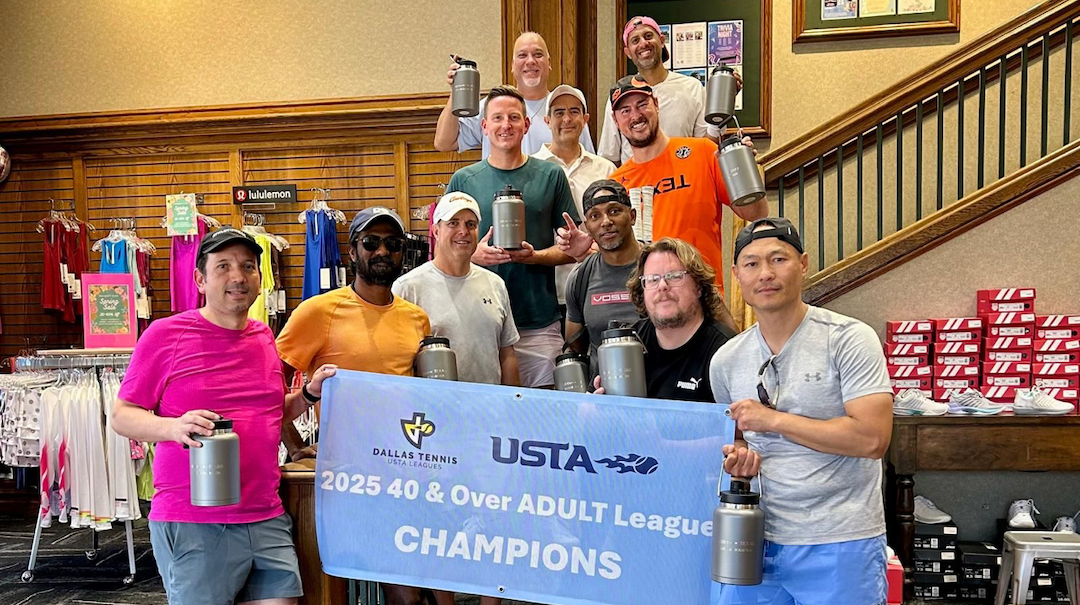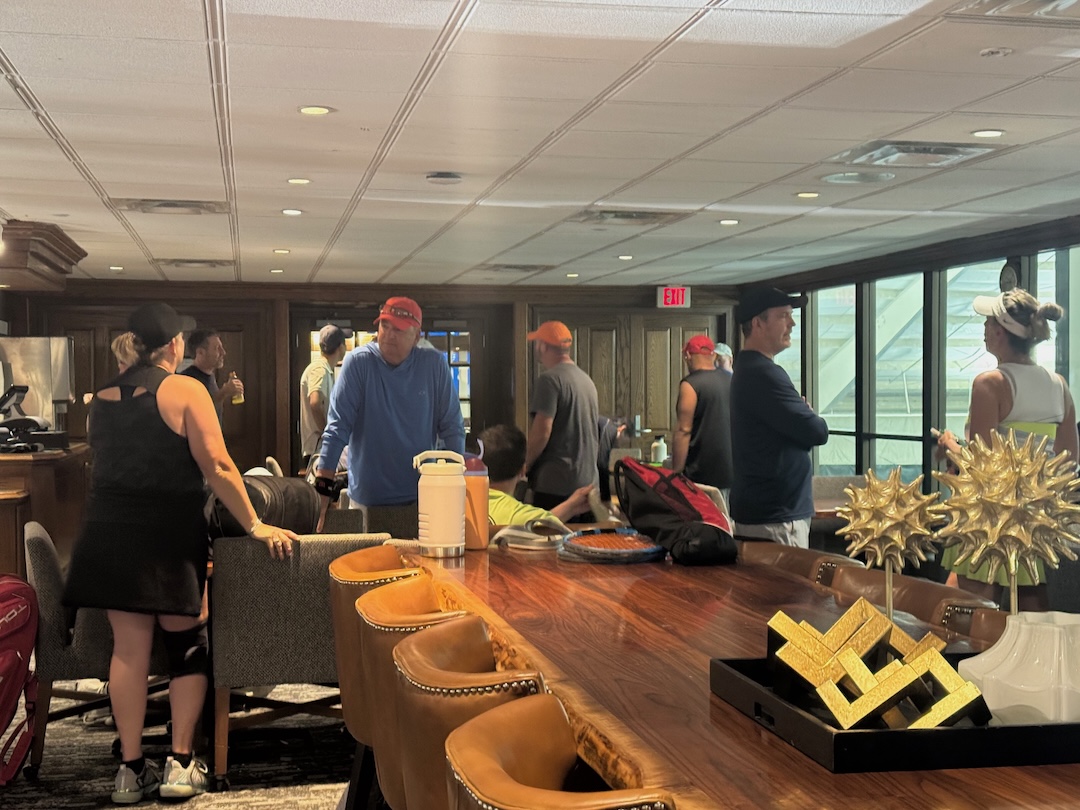I was on the court for a match last Sunday during the Greater Fort Worth Tennis Coalition (GFWTC) Tri-Level tournament when the lightning detectors activated. I immediately put my racquet in my bag and gathered up my gear to walk off the court. I was stunned by the realization that I was the only player in the vicinity with that reflex reaction.
The players on our court discussed whether a stoppage of play was mandatory when the lightning detectors were activated. During that conversation, I expected an announcement directing players to clear the courts either by the North Richland Hills Tennis Center pro shop or the GFWTC tournament desk. Neither was forthcoming. Eventually, I was convinced to stay on the court and resume play.
When the detectors went off, my partner and I had just closed out a game to go up 5-2 in the second set. With the first set already under our belts, the finish line was in sight. It took two additional games to close it out while thunder rumbled around us, and flashes of lightning were visible in the clouds. Five to ten minutes after our match was completed, the line of thunderstorms that had been approaching arrived, and heavy rain made the lightning detectors a moot point.
This was my first experience playing at a staffed facility where the lightning detectors were activated without an enforced stoppage of play. After our match concluded, the staff at the pro shop desk told me they had no policy to pull players off the court. Indeed, while the city of North Richland Hills Parks and Rec Department issued a press release in 2023 proudly announcing the installation of lightning detectors at the tennis center, the city doesn’t have rules or policies outlined. The closest thing to that is also in that press release: “The new system provides audible and visual alerts to park users when lightning is within close proximity (10 miles or less) to the park so they can take necessary safety precautions.”
In the intervening time, the RTC’s head pro directly confirmed that play would have been stopped if he had been present that day under the conditions I described. However, the facility has also experienced instances of its lightning detectors activating with no storms in the area. Hence, they have a layer of judgment built into the decision process. I am guessing that the desk staff last Sunday was unaware of the weather situation and dealing with a crowded pro shop as players jockeyed for position inside due to the impending rain.
The GFWTC doesn’t have any provisions for lightning in its League Regulations or any other document on its site that I could find. That likely explains why the tournament desk staff also took no action. Additionally, the GFWTC no longer staffs League playoff events with USTA officials. When I examine official USTA positions on lightning later this weekend, it will be an academic exercise since no one was present to take any sort of stand from that perspective.
I prefer playing at facilities with lightning detectors installed because it eliminates the guesswork about whether and when play should be stopped. It is an unbiased science-based arbiter for determining when it is time to pick up the racquets and walk off the court. It doesn’t make any sense to me to ignore those warnings and not take safety precautions. My attitude is also largely informed by the fatalist belief that if any player on a tennis court gets hit by lightning, it will be me.
In this case, it may be tempting to conclude that continuing play was the right decision since no one was struck by lightning last Sunday. However, that doesn’t mean it’s a risk worth taking.
- 2024 GFWTC League Regulations, Greater Fort Worth Tennis Coalition, Revised November 2023.




Part IV of the Friend At Court says the following, but with a disclaimer at the beginning of the Section:
The text contained herein is for informational purposes only. The United States
Tennis Association does not assume liability for any information contained herein.
Any and all emergency care decisions should be made in consultation with a
licensed professional.
THUNDERSTORMS AND LIGHTNING
Lightning is a potential severe hazard and life-threatening consequence of an
approaching storm near outdoor tennis matches. It is important to be prepared
for immediate cessation of all matches or warm-up in the event of lightning. In
essence, if lightning is sighted, stop all activity and direct everyone to seek
appropriate shelter. A 30-30 rule may be used, which is as follows:
• If lightning is sighted and thunder then occurs in 30 seconds or less,
instruct everyone on site to seek appropriate shelter. Dividing the number
of seconds between lightning and thunder by 5 gives the distance of
lightning in miles. (For example, a flash-to-bang count of 30 seconds
means a distance of 6 miles.)
• Resume tennis activity after a minimum of 30 minutes has elapsed since
the last lightning strike was seen.
The primary shelter choice is any substantial, frequently inhabited building
with working electricity, telephones and plumbing. While inside, avoid using
electrical devices or telephones attached to cords, and refrain from taking
showers. If such a building is not available, the next safest location is a fully
enclosed vehicle with a metal roof and closed windows. Do not touch the metal
framework while inside the vehicle.
Avoid the following locations:
• Open fields
• Proximity to open water
• Trees, flag poles, or light poles
If anyone has been struck by lightning, activate emergency medical services
immediately. If possible, move the injured person to a safer location.